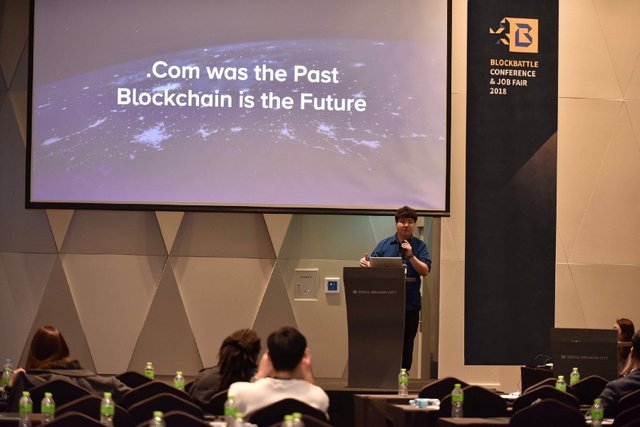Blockchain Business, Not Yet.
Blockchain Business, Not Yet.

.Com was the Past. Blockchain is the Future.
In the beginning of a revolution, it always clashes with the conventional powers. Yet gradually, mankind adapts to the positive changes. Let’s take the internet as an example. Did you know that Google would grow this much? There was a time when Google stocks were affordable. People couldn’t imagine how much the internet would change their lives, but it did, and it was the driving force of the third industrial revolution.
Now, learning from our mistakes not buying Google stocks, this is the time to invest in the fourth revolution, which is to tokenize assets on the internet. And in order to make this work; it mustn’t be reduplicated, falsified, and we need to prevent double spend. And blockchain checks every box. Thus, in the process of tokenizing assets, blockchain technology is irreplaceable.
We are currently watching the early phase of blockchain technology. Now, this technology is just a tiny sprout, but is growing very rapidly. In the future, we won’t need to bring wallets, just your phones. Blockchain will make it happen. A few years later, in all fields of business and even in personal life, blockchain will be entwined in our daily lives just as the internet has.
Tokenize Assets
If you can rewind time to 2009, what would you have done? I definitely would have gathered a lot of Bitcoins. Traditionally we kept our assets in cash or gold bar, after the advent of the internet, global non-cash transactions have grown to 535 billion dollars within 30 years.
Since 2009, assets were transferred online via Bitcoin. Cryptocurrency started from zero and now has grown to 151 billion dollars, and it took only ten years. According to the Credit Suisse, global wealth is about 317 trillion dollars. Only less than 0.1% of assets have been tokenized. I guess ten or twenty percent of the world’s assets will be tokenized in five years. Then coin market cap will grow 100 or 200 times, naturally the price of cryptocurrency would rise.
Currently, there are more than two thousand types of cryptocurrency. Which of the currencies should we even choose? On top of that, most aren’t even in use! It’s hard to judge them accurately from an investor’s perspective. It is only a matter of time before the legal system for the crypto market gets established, and then the blockchain technology would be commercialized throughout borders, which leads the market for cryptocurrency to expand vastly. Tokenizing global assets will be our future.
The Answer is Technology.
Many ICO projects that develop main-net, tend to compare their work with ‘paving the highway.’ Some mention ten thousand tps and others do the so-called ‘expanding variety of highways.’ However, let’s look at this from another perspective. Highways wouldn’t have appeared without cars. What Grabity does is manufacturing engines for automobiles. There are many projects that produce cars, in other words, making DApps, yet their engines aren’t good enough, and current main-net has some problems with scaling and storage.
When the automobile industry started, every car company used to ardently compete with each other to make their own engines, frame, and components, rather than specializing one part. Yet, as Mercedes Benz invented the early gasoline engine, that other couldn’t compete, this changed the whole industry; Mercedes dominated and the others refined different areas.
Blockchain is developing in the same way. At this point, blockchain main-net related projects are in a rush to provide their unique service. Grabity will offer the world a Mercedes engine. Relieve other projects from the burden and help them focus on other sectors. This, I hope, would drive dynamic developments in the blockchain industry.
Grabity will provide a Mercedes grade SDK that is easy to make a DApp and this will invite conventional organizations to the blockchain world.
By Jangwon Lim, CEO of Grabity
Great project
I like this project.
The Grabity ecosystem consists of nodes, community, DApp, and platforms, and each institute contributes to the ecosystem based on the token economy. We present the token economy and various requirements for the ecosystem to function and develop as follows.